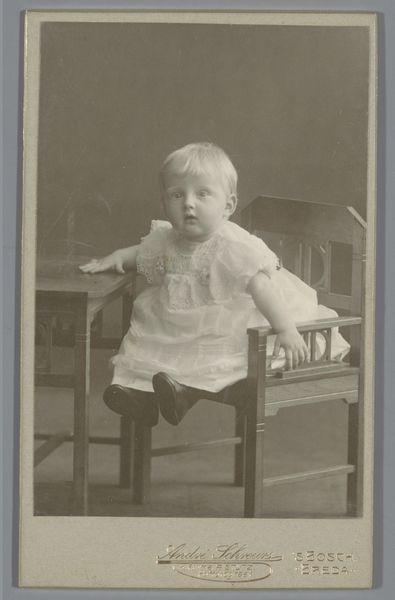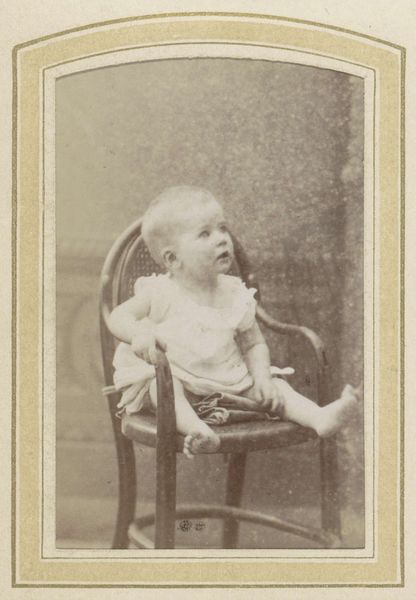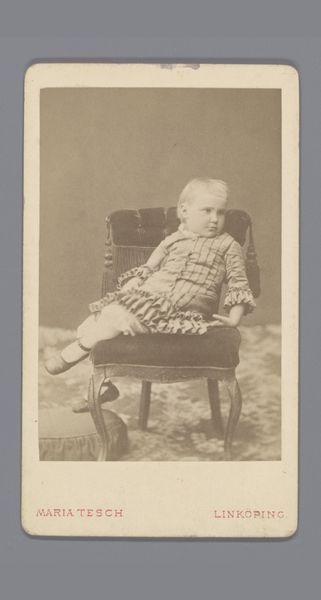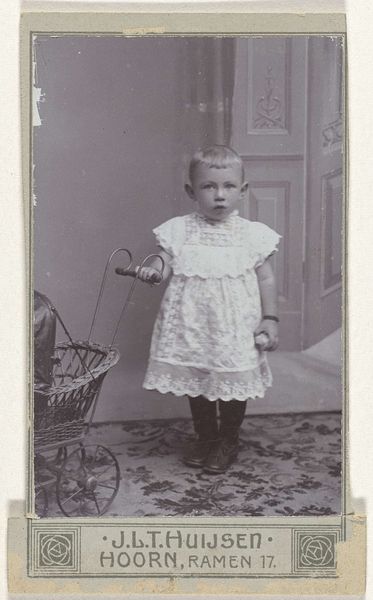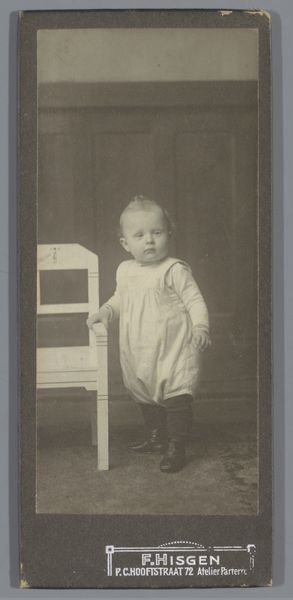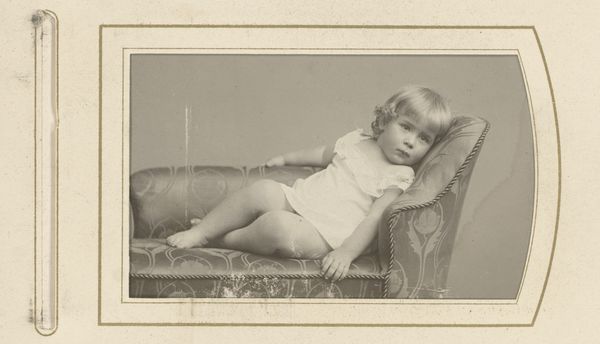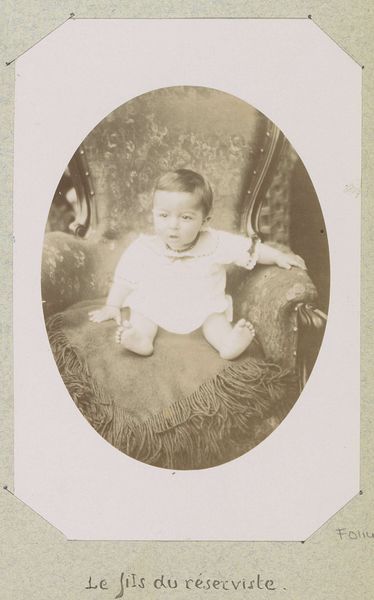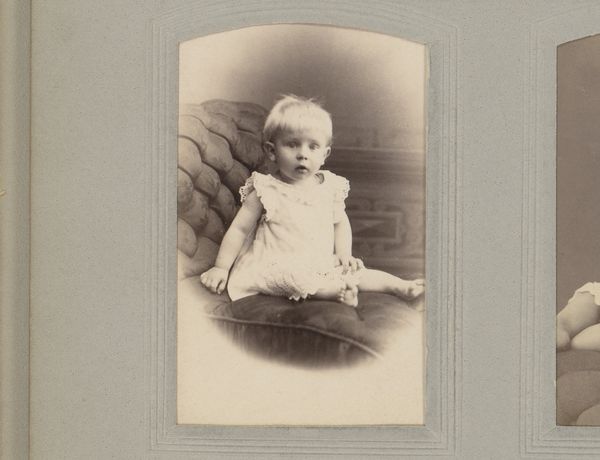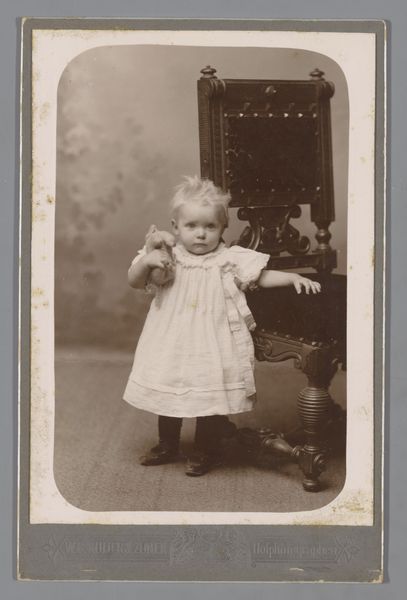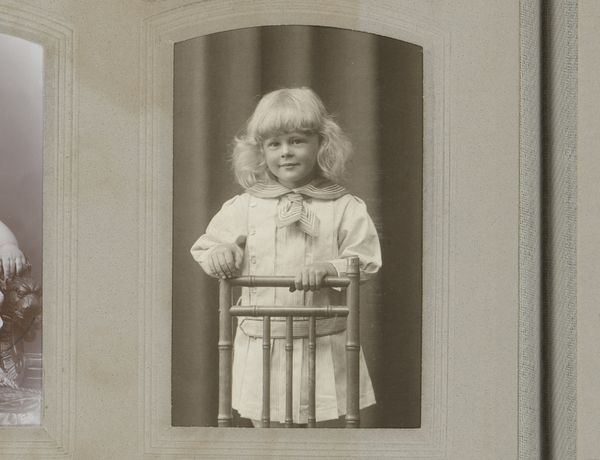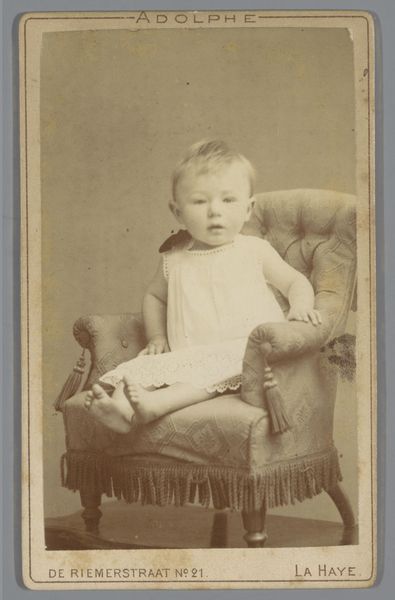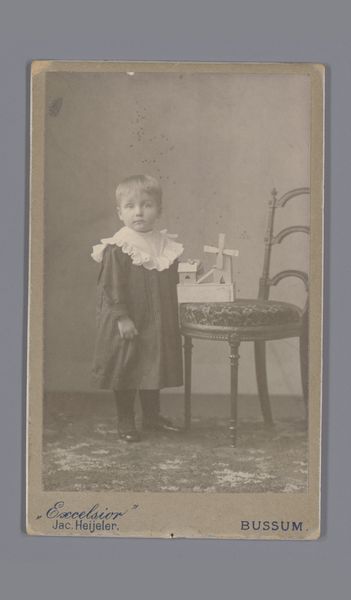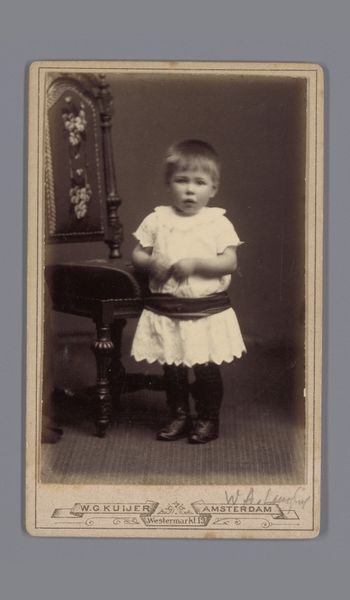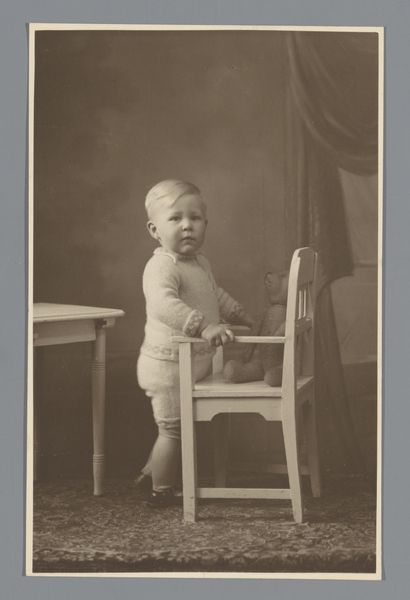
Portret van Herman Marius Boelen (geboren 1885) als baby op een kruk c. 1885 - 1888
0:00
0:00
carlwilhelmbauer
Rijksmuseum
photography, albumen-print
#
portrait
#
print photography
#
photography
#
historical photography
#
19th century
#
genre-painting
#
albumen-print
Dimensions: height 135 mm, width 94 mm, height 162 mm, width 105 mm
Copyright: Rijks Museum: Open Domain
Curator: Isn't this an evocative image? It's titled "Portret van Herman Marius Boelen (geboren 1885) als baby op een kruk"—"Portrait of Herman Marius Boelen (born 1885) as a baby on a stool"—created between 1885 and 1888 by Carl Wilhelm Bauer. It's an albumen print, offering such detailed tonal range. Editor: There's something quietly melancholic about this image. The baby's direct gaze, the muted sepia tones, and the somewhat austere background... it all contributes to a sense of formality, almost gravity, that feels heavy for a child's portrait. Curator: I think you’ve hit on something! Bauer, the photographer, worked in Middelburg en Vlissingen, capturing that late 19th-century Dutch sensibility so well. These weren’t casual snapshots; they were carefully staged compositions, intended to capture a specific ideal. This image hints at ideas about childhood, class, and representation. Editor: The stool is also an interesting choice for such a portrait. One leg is so much shorter than the others that the baby's feet are forced onto that same side in a kind of cramped awkwardness, disrupting any idealized vision, don't you think? Does the kruk symbolize something specific about this family's circumstances? Or is the short stool perhaps a found or created space, symbolizing lack, awkwardness, or stunted growth in a quickly developing era? Curator: Hmm, that's a bold interpretation. Perhaps it was simply what was available at the moment? The imperfections lend a certain charm. The uneven bricks and door, and even the barely there stain on the photographic paper, makes me wonder about time's impacts, decay, and rebirth. In a way, it adds a certain authenticity. Editor: Yet, what constitutes "authenticity" in a photograph meticulously constructed and consciously performed? Isn't photography itself an act of capturing power? Even those accidental “blemishes” tell stories about how memory and social class are visually inscribed on images. Who were they hoping would see and consume these images of little Herman? What social performance did that seeing reproduce? Curator: Ultimately, whether perceived as melancholic or simply a standard of its time, "Portrait of Herman Marius Boelen as a baby" continues to offer nuanced perspectives on portraiture, reminding us of photography's complex power to preserve and shape narratives, both personal and societal. Editor: Precisely, it compels us to critically examine what the art obscures or highlights about childhood, history, and visual representation.
Comments
No comments
Be the first to comment and join the conversation on the ultimate creative platform.
